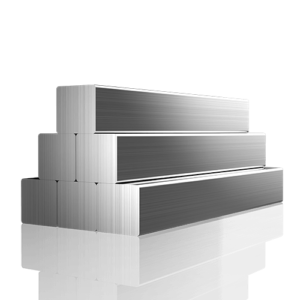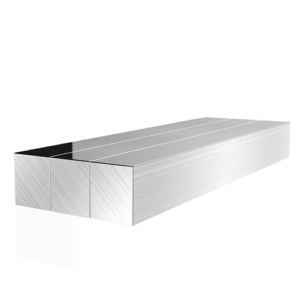Introduction

In the realm of industrial materials, 304 stainless steel square bar stands out as a versatile and robust option. Its unique properties make it an indispensable component in various applications, ranging from construction to manufacturing. In this comprehensive guide, we’ll delve into the characteristics, applications, and benefits of harnessing the power of 304 stainless steel bar.
Understanding 304 Stainless Steel Square Bar
Before we explore its applications, let’s understand what sets 304 stainless steel bar apart. Composed primarily of chromium and nickel, with small amounts of other elements such as carbon and manganese, 304 stainless steel boasts exceptional corrosion resistance, high durability, and impressive mechanical properties. Its square bar form adds to its versatility, making it suitable for diverse structural and machining purposes.
Applications Across Industries
The versatility of 304 stainless steel square bar finds applications across numerous industries:
- Construction: From architectural structures to support beams, 304 stainless steel bar provides the strength and durability required for construction projects.
- Manufacturing: In the manufacturing sector, this material is utilized in the production of machinery components, fasteners, and tools due to its machinability and resistance to wear and tear.
- Transportation: The automotive and aerospace industries rely on 304 stainless steel bar for its lightweight yet sturdy characteristics, making it suitable for components such as shafts and brackets.
- Food Processing: Due to its sanitary properties and resistance to corrosion from food acids and chemicals, 304 stainless steel bar is widely used in food processing equipment and facilities.
- Energy Sector: In oil and gas exploration and production, as well as in renewable energy infrastructure, 304 stainless steel bar serves in critical applications due to its reliability in harsh environments.
Advantages of 304 Stainless Steel Square Bar
The utilization of 304 stainless steel square bar offers several advantages:
- Corrosion Resistance: Its high chromium content provides exceptional resistance to corrosion, ensuring longevity in various environments.
- Strength and Durability: With robust mechanical properties, 304 stainless steel square bar maintains structural integrity under heavy loads and extreme conditions.
- Aesthetic Appeal: Its polished finish and clean appearance make it a popular choice for architectural and decorative applications.
- Ease of Fabrication: 304 stainless steel bar can be easily machined, welded, and formed, facilitating efficient manufacturing processes.
- Hygienic Properties: In industries requiring strict hygiene standards, such as food processing, its non-porous surface prevents bacterial growth, ensuring product safety.
Properties of 304 Stainless Steel Square Bar

| Property | Value |
|---|---|
| Corrosion Resistance | High |
| Tensile Strength | 75 ksi (min) |
| Yield Strength | 30 ksi (min) |
| Density | 8 g/cm³ |
| Hardness (Brinell) | 201 (max) |
Conclusion
In conclusion, the versatility, durability, and corrosion resistance of 304 stainless steel square bar make it an invaluable material across diverse industries. From construction to manufacturing and beyond, its exceptional properties contribute to the reliability and longevity of countless applications. Harnessing the power of 304 stainless steel bar is not just a choice; it’s a strategic investment in quality and performance.
This comprehensive guide aims to provide a thorough understanding of the properties, applications, and benefits of 304 stainless steel square bar, empowering industries to make informed decisions in material selection and utilization.
FAQ
Q:What is the difference between 304 and 316 stainless steel?
A:While both are austenitic stainless steels, 316 stainless steel contains molybdenum, enhancing its corrosion resistance, particularly in chloride environments.
Q:Can 304 stainless steel square bar be used outdoors?
A:Yes, 304 stainless steel square bar is highly resistant to corrosion from outdoor elements, including moisture and atmospheric conditions.
Q:Is 304 stainless steel square bar magnetic?
A:Yes, 304 stainless steel may exhibit some magnetic properties, particularly after cold working or machining processes.
Q:What is the maximum temperature tolerance of 304 stainless steel square bar?
A:304 stainless steel can withstand temperatures up to 1700°F (927°C) in intermittent service and 1600°F (871°C) in continuous service.
Q:How does the cost of 304 stainless steel square bar compare to other materials?
A:While initial costs may be higher than some alternatives, the longevity and low maintenance requirements of 304 stainless steel square bar often result in cost savings over time.
